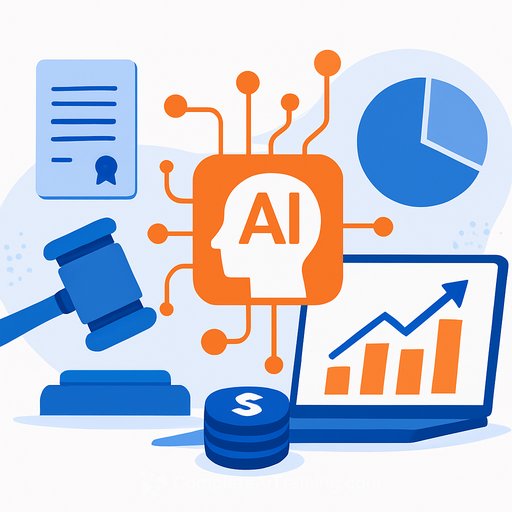Entity-First SEO for Law Firms: Why Third-Party Publishing Drives AI Search Visibility
Many firms still treat search like it's 2015. Publish a few blogs, match some keywords, and hope rankings hold. That model is done.
Today's search environment, including AI Overviews, is entity-driven. Google leans on third-party context to decide who you are, what you do, and whether you're credible enough to appear across results. Your site alone can't provide all of that proof.
How Third-Party Publishing Changes Your Visibility
Here's what this looks like in the wild. A Louisiana plaintiffs firm, Herman, Katz, Gisleson & Cain, published a piece on The Legal Examiner about a severe electrical accident and rescue. That article surfaced in the Top Stories carousel for several Google queries.
The placement is useful, but the real win is the signal. Google reads a clear report on a trusted domain and connects the firm to the topic, the location, and the legal issues. Those signals loop back to the firm's own site and strengthen how it's represented in the broader knowledge graph. A standalone site can't create that kind of reinforcement by itself.
How Entities Influence What Shows Up in AI Overviews
Shift the query to "electrical injury attorney" and the results change. The firm shows up inside AI Overviews, in a right-side article carousel, within the generated summary, and in standard organic listings.
That coverage isn't luck. The topic is clear, the third-party source is trusted, and the entity connections are clean. Google doesn't have to guess. It has evidence the firm belongs in the conversation. Topic, geography, and practice area stack together-producing reach your site can't achieve alone.
Why This Matters for Law Firms
Publishing only on your own domain creates a tiny footprint. It doesn't deliver the authority or clarity modern search systems require to place you confidently across results.
You need to show up where legal information is evaluated, cited, and connected. Trusted third-party coverage provides the validation your site can't supply. When that coverage is well-written, accurately linked, and tied to your practice and market, the difference in both traditional search and AI-driven results is dramatic.
How to Apply This to Your Firm
Step 1: Lock down your entity
- Use consistent Name, Address, Phone across your site, Google Business Profile, bar pages, and major legal directories.
- Add clear practice areas and attorney bios. Keep them consistent everywhere.
- Implement structured data (Organization, LocalBusiness/LegalService, Person for attorneys). Start here: Google's structured data overview.
Step 2: Secure trusted third-party coverage
- Contribute articles to reputable legal publications and relevant news outlets. Focus on case developments, safety issues, and public interest-not sales pitches.
- Include precise facts, citations, and named entities (parties, locations, courts, statutes). Link back to a relevant page on your site that expands the topic.
- Make the practice area and geography unmistakable in the headline and body.
Step 3: Connect the dots
- From third-party articles, link to the most specific destination on your site (case page, practice subpage, attorney bio). Avoid generic homepage links.
- On your site, reference that coverage in a "News" or "Insights" post and link back to the third-party article. This bi-directional trail helps search systems confirm relationships.
- Use consistent entity labels across platforms. If you cite organizations or public data, include authoritative links where appropriate.
Step 4: Build case-centered content hubs
- Create a short, factual synopsis on your site for each significant matter you can publicly discuss.
- Publish a deeper or complementary angle on a third-party site. Cross-reference the two.
- As the matter progresses, update both pieces with dates and specifics so recency and relevance remain clear.
Step 5: Maintain editorial standards
- Fact-check everything. Use plain language. Keep titles specific.
- Cite sources and data. Avoid duplicate content; each article should add something new.
- Track how often you earn coverage and which topics produce visibility across AI Overviews and carousels.
What Good Looks Like
- A trusted outlet reports on your case or topic.
- Your firm is named consistently, with clear practice and location cues.
- The article links to a topical page on your site; your site cross-links back.
- Entities align across sources, so Google can place you in AI Overviews, carousels, and organic results without hesitation.
Bottom Line
Visibility isn't about pumping out more blog posts. It's about context. Put your firm inside trusted coverage that reinforces who you are, where you work, and which matters you handle. That's how you earn presence across every meaningful surface of search.
Helpful resources
- Google Knowledge Graph basics
- AI courses by job for legal teams leveling up on AI-driven search fundamentals
If you want help applying this approach, contribute to a trusted legal publication, keep your entity data consistent, and connect every piece with clear links and citations. For inquiries, email: nick@legalexaminer.com
Your membership also unlocks:






